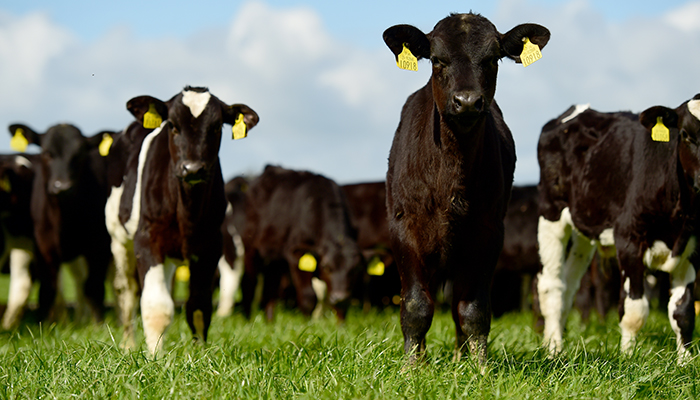09 October 2023
Maintaining calf performance at grass for the rest of the grazing season this autumn

In general, the summer gone by has been tough on calves at grass. Most calf to beef producers found the growth rates of calves during the wet July and August has being back on previous years.
The grass dry matter (DM) was low and worm burdens were higher than usual contributing to reduced growth rates. This has led to some calves being underweight for the time of the year. February and early born March calves should weigh 180 to 190 kgs on the 1st September, however many farmers are saying calves are closer to 160 kgs on that date.
All is not lost and over the next couple of months if the right management practices are implemented, these calves can still be on target for the start of housing. The target weigh on the 1st November is to have calves above 220 kgs.
Lower dry matter grass
As we move into to the Autumn, grass growth starts to slow and grazing conditions tend to become more difficult. In prolonged wet periods that we can often get during autumn, the dry matter of grass can decrease from as high as 19% to as low as 10%. This will lead to a big drop in the energy intake of young cattle. By introducing up to one and a half kgs of concentrate feed over the autumn months, this will help stabilise the DM intake of the calf during periods when the DM of grass will be low.
Teagasc research has shown that where one kg of concentrate plus good quality grass is offered, an average daily gain (ADG) of up to one kg can be achieved in spring born calves. If we want our calves to be on target at housing, they need to be doing close to this one kg ADG for the remainder of the grazing season. If grass quality is not ideal, increase concentrate levels up to 1.5 kg, there is no point in skimping now and then having to feed more concentrates during the housing period because they are not on target. As protein levels in Autumn grass is still high, a 14-16% high energy ration will suffice.
Batching calves on weight
Batching calves into a lighter batch and a heavier batch also works well. If there is only one batch of calves running on the farm, it is possible that the stronger calves will bully the lighter calves resulting in the weaker calves consuming less meal than they require. It is also more economical to batch calves according to size as the stronger calves will need less meal in order for them to reach target weight at housing. If it is not possible to run one batch of calves it is advisable that there is a minimum of 400mm trough space per calf.
Worm burden
The wet and mild summer has meant that there is likely to be a high level of parasites present in calves. Throughout the Autumn continue to monitor stomach worms through regular Faecal Egg Count (FEC) sampling. The recommended level to dose at is when the FEC is greater than 200 eggs/g, but farmers should consult with their vet when they receive their results. In the case of lung worm monitoring for clinical signs such as a husky cough or difficult breathing is the best way to identify if there is an issue. Heavy infestations can lead to respiratory disease therefore rapid treatment is advised.
Subscribe to the Teagasc DairyBeef 500 eNewsletter
